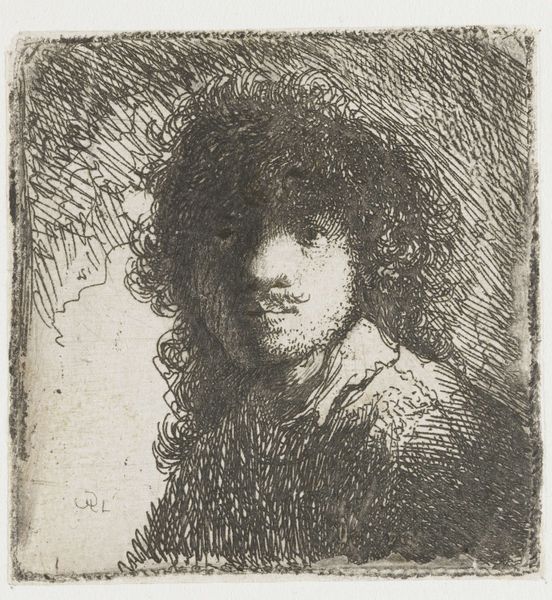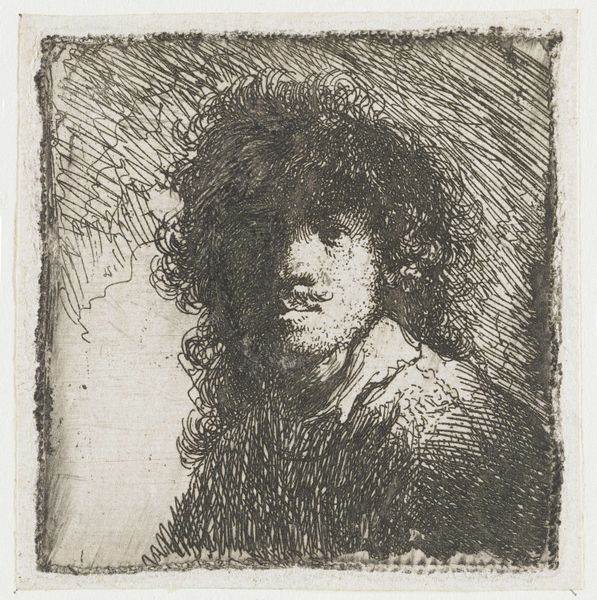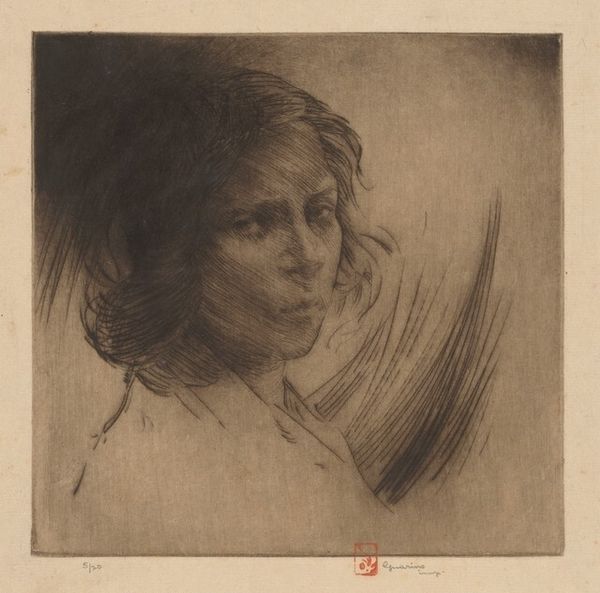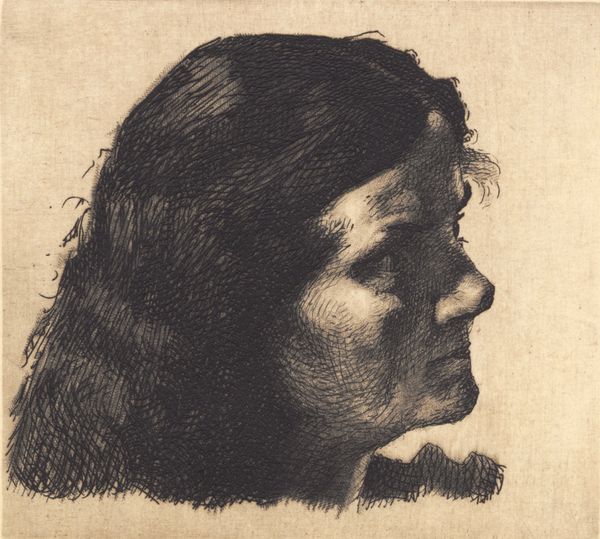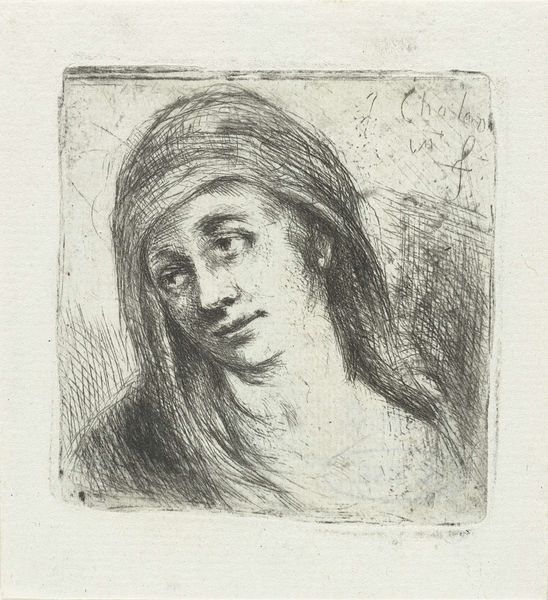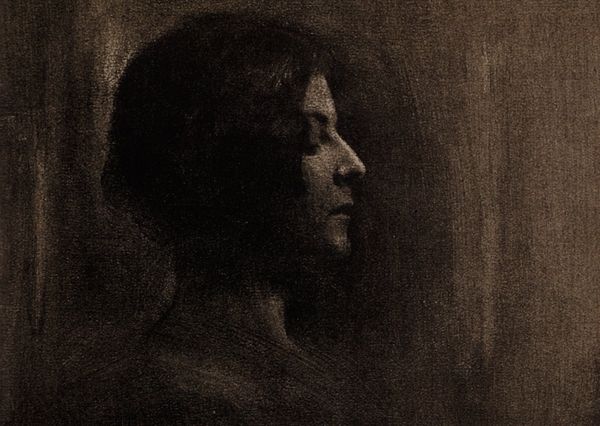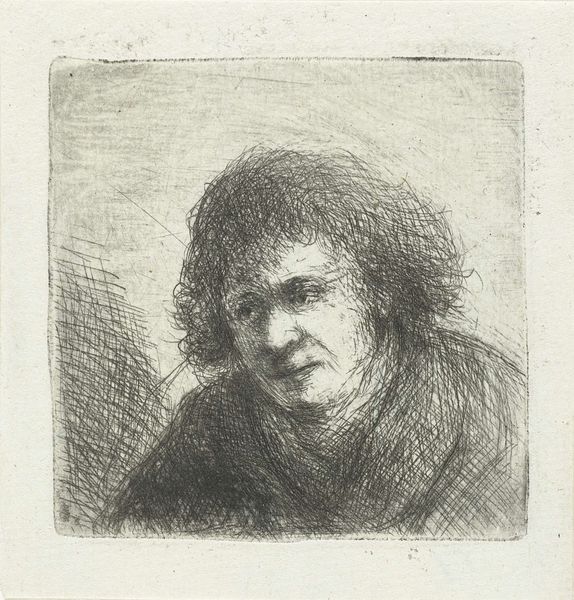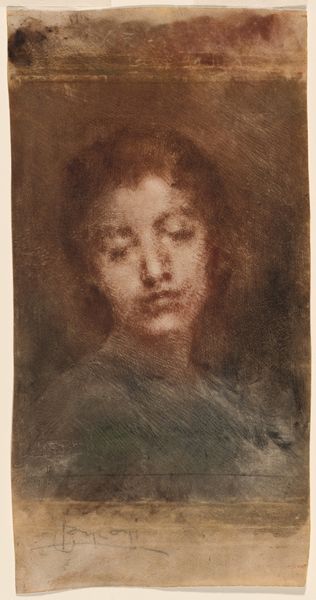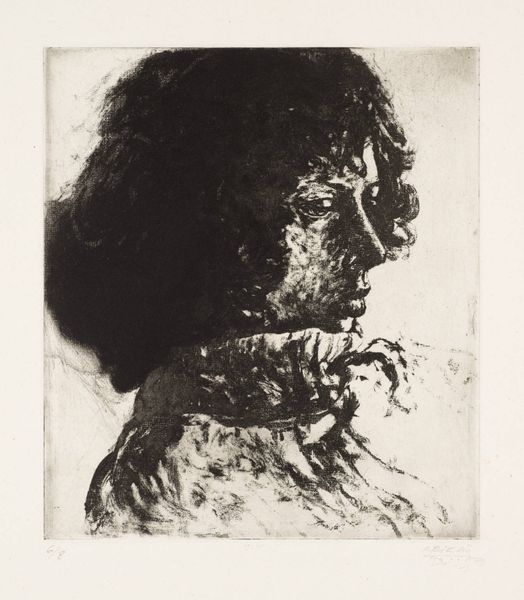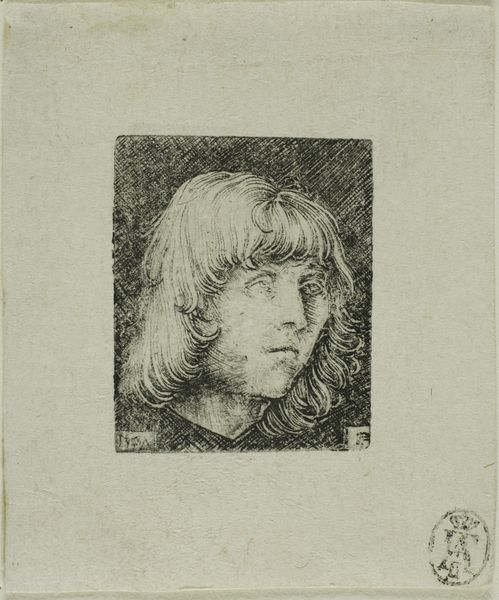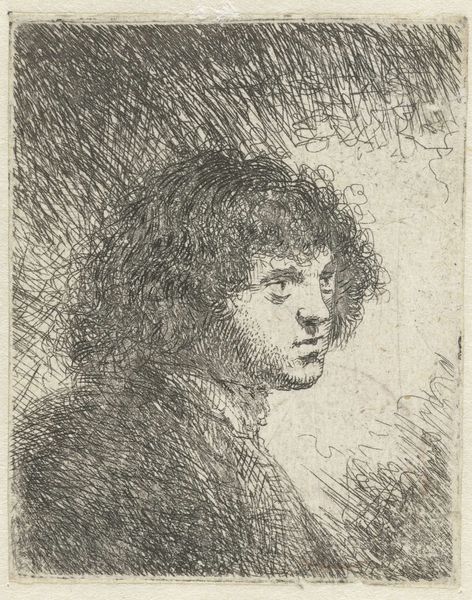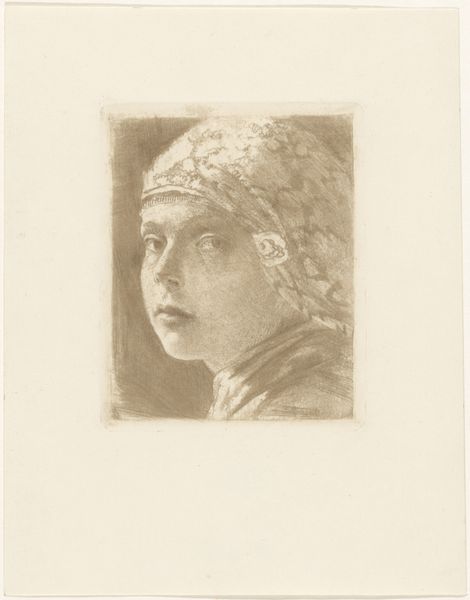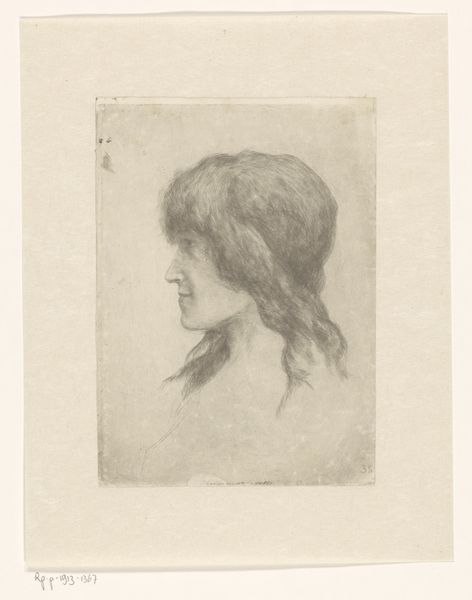
drawing, pencil, graphite
#
portrait
#
drawing
#
pencil
#
graphite
Dimensions: overall: 45.5 x 45.5 cm (17 15/16 x 17 15/16 in.)
Copyright: National Gallery of Art: CC0 1.0
Curator: We’re looking at M.C. Escher's "Portrait", executed in pencil and graphite. Its date is, unfortunately, unknown. Editor: It's very somber, almost ghostly. The sharp contrast creates a definite intensity in the subject’s gaze. The mark making looks a little unfinished or hesitant. Curator: Right, and given Escher’s later fame in mathematically precise printmaking, this drawing does seem remarkably free-form. Considering its medium, you immediately understand this was achieved through physical labor. You can imagine the repetitive motions and pressure exerted to get the stark variations of shade in the hair and surrounding space. Editor: Absolutely. Knowing Escher's other work, it does invite questions about the institutional and market pressures influencing an artist's evolution. Did he feel pressure to abandon drawing for more commercially viable forms of printmaking? Did society not recognize his drawings as high art because of the unrefined method? Curator: Exactly the questions we should ask! I wonder, though, what materials were accessible, what graphite pencils he had on hand, and where those were made. We take materials like pencils for granted. Editor: And even the selection of his subject says a lot. Portraits at the time often signified wealth or status. One must consider Escher’s politics and his social positioning at that period to understand what might have influenced his portrayal of that particular person in such an intimate manner. Curator: Well, and if it wasn’t commissioned, how do choices change, or become acts of defiance against these ingrained socio-political traditions you describe? I’m especially interested in those lower, raw edges of the paper: What was discarded or cut away during or after its making? What were the standards in production, gallery settings, or public consumption at the time that forced such trimming? Editor: Good point. This seemingly simple sketch opens a whole range of questions about production and the public consumption of art at the time. Curator: Precisely! And I'm eager to think further about the social implications that this drawing unveils within the context of labor and materiality.
Comments
No comments
Be the first to comment and join the conversation on the ultimate creative platform.
